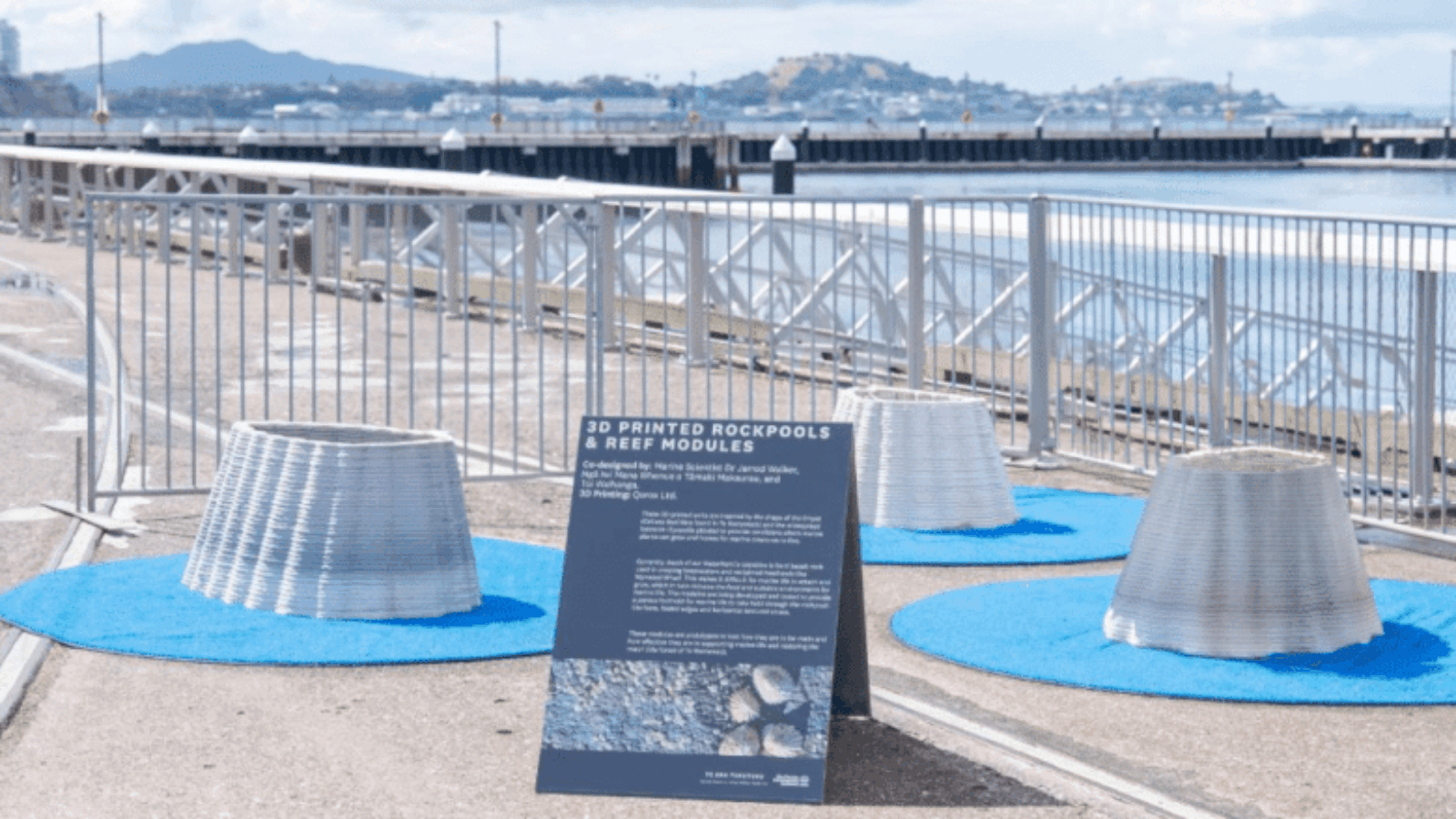In an attempt to address environmental challenges facing our oceans, Eke Panuku, a leading New Zealand-based sustainable development organization, has partnered with QOROX, a pioneering 3D concrete printing company, to create artificial barnacles aimed at improving marine biodiversity. The project leverages the unique capabilities of 3D printing to enhance the effectiveness and sustainability of marine habitat structures.
QOROX is an official reseller of CyBe Construction, a Dutch developer of 3D concrete printing technology. By expanding the reach of CyBe’s hardware, software, and materials, QOROX is enabling other companies in Australia and New Zealand to adopt sustainable 3D printing solutions – fostering a more innovative and eco-friendly construction landscape.

Our oceans are currently grappling with numerous environmental threats, including rising sea levels, declining water quality, reduced marine biodiversity, and the depletion of coral reefs. Eke Panuku has long been committed to transforming Auckland through urban regeneration projects that repair the land and mitigate environmental damage. The company’s latest endeavor extends this commitment to the ocean – employing 3D concrete printing to develop custom-designed limpets and barnacles that support marine life.
Manufacturing on Demand
The artificial barnacles produced by QOROX are designed to create microhabitats – fostering a rockpool effect that serves as a haven for various sea creatures. Unlike traditional marine modules, which are typically uniform in design, these 3D printed structures are uniquely tailored to meet specific ecological requirements. “Normally these marine modules are not purpose-built; they have a standard form,” said Fiona Knox, Priority Location Director at Eke Panuku. “However, we needed them to be a unique size and shape, so we sought the help of 3D printing specialists QOROX, based in Hamilton.”

The use of 3D concrete printing technology offers significant benefits, including design flexibility, cost-efficiency, and environmental sustainability. The material used for printing not only supports oceanic flora but also enhances the provision of food and shelter for marine life, promoting a thriving underwater ecosystem.
QOROX has been at the forefront of 3D concrete printing in New Zealand since 2018, achieving numerous milestones such as the first 3D printed commercial building and the largest fully 3D printed building in the Southern Hemisphere. The company’s expertise extends to creating artificial reefs, which have been shown to attract marine life and improve biodiversity.
You might also like:
Black Buffalo 3D to live print first-of-its-kind home in Fort Worth, TX: The structure itself was designed by Boxer Properties and is called “LoMa” (short for low maintenance). The vision of the design was to build a home that is both affordable in terms of construction and maintenance. Black Buffalo 3D’s ability to 3D print structural walls from proprietary cement inks is vital to realizing the LoMa goal.
* This article is reprinted from 3D Printing Media Network. If you are involved in infringement, please contact us to delete it.
Author: Edward Wakefield


Leave A Comment